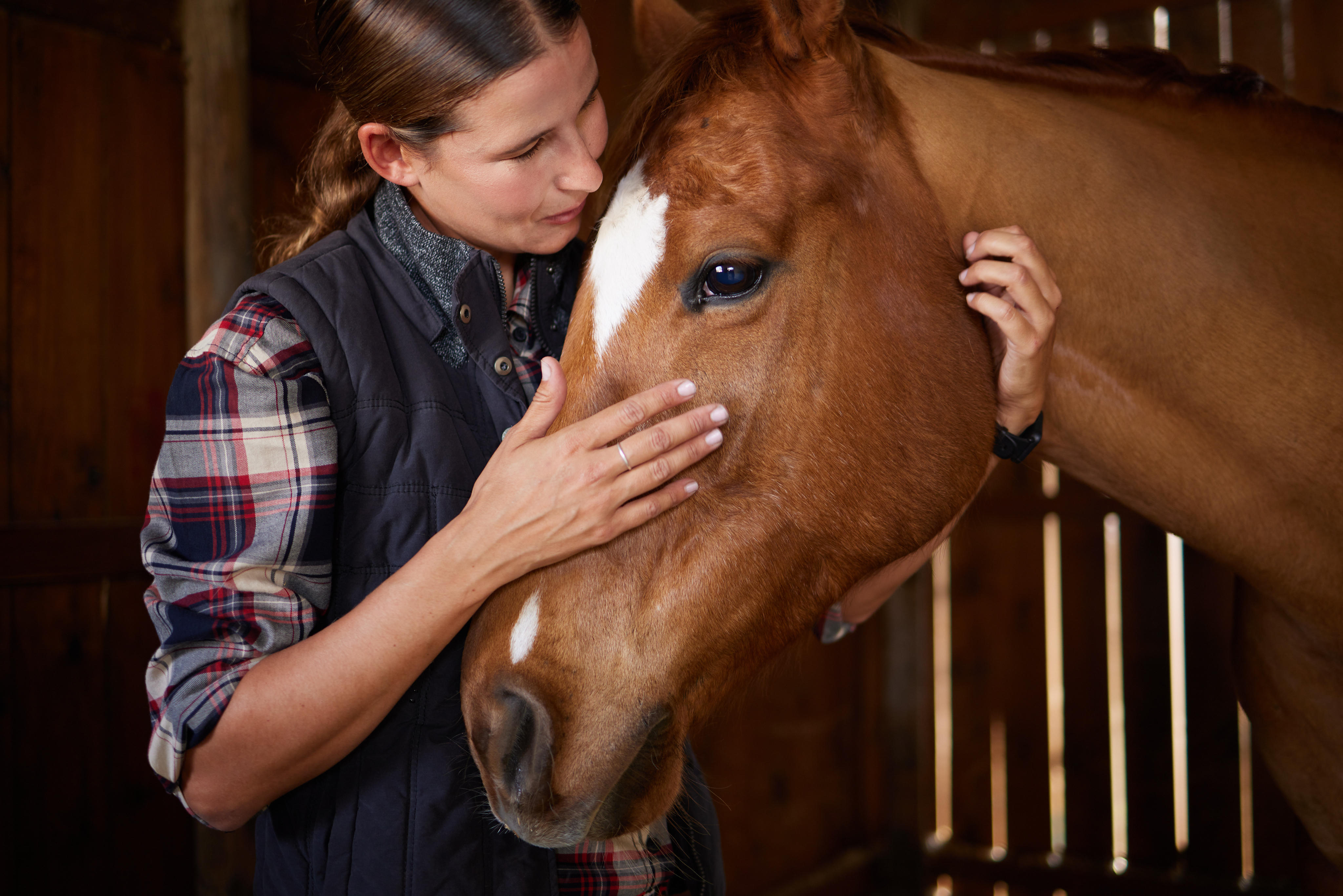BRAVECTO® Clinical Studies
Published Clinical Studies
View and download recent clinical studies to stay up-to-date and educated on the proven difference of BRAVECTO.
Safety of concurrent treatment of dogs with fluralaner (BRAVECTO™) and milbemycin oxime – praziquantel
Abstract Background: Fluralaner (Bravecto™; Merck/MSD Animal Health) is a novel systemic ectoparasiticide for dogs providing long-acting flea and tick control after a single oral dose. Milbemycin oxime and praziquantel are routinely used to control Dirofilaria immitis and intestinal worm infections in dogs. The safety of concurrent use of fluralaner and a commercially available milbemycin oxime plus praziquantel combination tablet, in particular with regard to gastrointestinal symptoms, was investigated using oral doses at or above the maximum recommended rates. Findings: Some minor and transient clinical findings were observed during the study period; however, none of these was considered to be related to concurrent treatment with fluralaner and milbemycin oxime plus praziquantel, or to the use of either product alone. Conclusions: Concurrent treatment with fluralaner, milbemycin oxime and praziquantel is well tolerated in dogs. Keywords: Bravecto, Fluralaner, Dog, Safety, Milbemycin oxime, Praziquantel Read more about this study here
Safety of concurrent treatment of cats with fluralaner and emodepsid–praziquantel
Abstract Background: Fluralaner is a novel systemic ectoparasiticide for cats providing immediate and persistent flea- and tick-control after a single topical dose. Emodepsid and praziquantel are routinely used to control intestinal worm infections in cats. The safety of concurrent use of fluralaner and a commercially available emodepsid-praziquantel combination topical solution was investigated using topical administrations at the maximum recommended dose rates. Findings: Few mild and transient clinical findings like erythema at the administration site and single incidences of salivation or vomiting were observed. All of which were consistent with the individual product leaflets. There were no findings suggesting an increased safety risk associated with the concurrent treatment of cats with fluralaner and emodepsid-praziquantel. Conclusions: Concurrent treatment with fluralaner, emodepsid and praziquantel is well tolerated in cats. Keywords: Cat, Fluralaner, Bravecto, Emodepsid, Praziquantel, Profender™, Safety Read more about this study here
Results from a U.S. dog owner survey on the treatment satisfaction and preference for fluralaner against flea and tick infestations
Abstract Background: Fluralaner is a potent acaricide and insecticide effective against flea and tick (F/T) infestations on dogs and cats. Fluralaner for dogs can be administered orally as a flavored chew with up to a 12-week redosing interval, about three-fold less frequently than monthly F/T medications. This study surveyed dog owners who currently administer fluralaner to their dogs to determine their level of satisfaction with the product and its perceived benefits compared to monthly medications, including the potential for on-time administration compliance. Methods: In the period April to June 2016, dog-owner clients from 25 veterinary practices in 16 U.S. states completed a 10-item survey questionnaire (n=559) that asked respondents about their experience with fluralaner and monthly medications. In multivariate analyses, predictors of treatment satisfaction and predictors of preference with fluralaner have been estimated by an ordered logistic regression and a logistic regression, respectively. Results: Seventy-three percent of survey respondents had used monthly F/T medications prior to fluralaner. Respondents identified convenience (74%), the 12-week dosing interval (69%), and less-frequent dosing (68%) as the three most important benefits of using fluralaner. Sixty six percent were very satisfied and 30% were satisfied with fluralaner and 89% preferred fluralaner versus monthly F/T medications. Pet owners who used monthly F/T products, 65% thought that they were more likely to give the next fluralaner dose on time compared to doses of monthly F/T products, and 88% said that giving repeat doses of fluralaner was more convenient than giving monthly F/T products. In multivariable models, “12 weeks dosing/convenience” and “female gender” were positively associated with treatment satisfaction and preference with fluralaner (p<0.05). Conclusions: Overall satisfaction with fluralaner and preference for fluralaner compared to monthly F/T medications were high. The most significant factor predicting satisfaction and preference was perceived benefit with 12 weeks dosing or convenience. Keywords: Bravecto, Canine, Compliance, Fleas, Ticks, Ectoparasite, Ectoparasiticide, Acaricide, Insecticide, Isoxazoline Read more about this study here
Plasma pharmacokinetic profile of fluralaner (BRAVECTO™) and ivermectin following concurrent administration to dogs
Abstract Background: Fluralaner is a novel systemic ectoparasiticide for dogs providing immediate and persistent flea, tick and mite control after a single oral dose. Ivermectin has been used in dogs for heartworm prevention and at off label doses for mite and worm infestations. Ivermectin pharmacokinetics can be influenced by substances affecting the p-glycoprotein transporter, potentially increasing the risk of ivermectin neurotoxicity. This study investigated ivermectin blood plasma pharmacokinetics following concurrent administration with fluralaner. Findings: Ten Beagle dogs each received a single oral administration of either 56 mg fluralaner (Bravecto™), 0.3 mg ivermectin or 56 mg fluralaner plus 0.3 mg ivermectin/kg body weight. Blood plasma samples were collected at multiple post-treatment time points over a 12-week period for fluralaner and ivermectin plasma concentration analysis. Ivermectin blood plasma concentration profile and pharmacokinetic parameters Cmax, tmax, AUC∞ and t½ were similar in dogs administered ivermectin only and in dogs administered ivermectin concurrently with fluralaner, and the same was true for fluralaner pharmacokinetic parameters. Conclusions: Concurrent administration of fluralaner and ivermectin does not alter the pharmacokinetics of either compound. Based on the plasma pharmacokinetic profile and the clinical observations, there is no evident interaction between fluralaner and ivermectin, and co-administration does not increase the risk of ivermectin associated neurotoxicity. Keywords: Fluralaner, Bravecto, Ivermectin, Dog, Pharmacokinetic, P-glycoprotein, MDR1 Read more about this study here
Pharmacokinetics of fluralaner in dogs following a single oral or intravenous administration
Abstract Background: Fluralaner is a novel systemic insecticide and acaricide. The purpose of these studies was to investigate the pharmacokinetic properties of fluralaner in Beagle dogs following single oral or intravenous (i.v.) administration. Methods: Following the oral administration of 12.5, 25 or 50 mg fluralaner/kg body weight (BW), formulated as chewable tablets or i.v. administration of 12.5 mg fluralaner/kg BW, formulated as i.v. solution to 24 Beagles, plasma samples were collected until 112 days after treatment. Plasma concentrations of fluralaner were measured using HPLC-MS/MS. Pharmacokinetic parameters were calculated by non-compartmental methods. Results: After oral administration, maximum plasma concentrations (Cmax) were reached within 1 day on average. Fluralaner was quantifiable in plasma for up to 112 days after single oral and i.v. treatment. The apparent half-life of fluralaner was 12–15 days and the mean residence time was 15–20 days. The apparent volume of distribution of fluralaner was 3.1 L/kg, and clearance was 0.14 L/kg/day. Conclusions: Fluralaner is readily absorbed after single-dose oral administration, and has a long elimination half-life, long mean residence time, relatively high apparent volume of distribution, and low clearance. These pharmacokinetic characteristics help to explain the prolonged activity of fluralaner against fleas and ticks on dogs after a single oral dose. Keywords: Fluralaner, Pharmacokinetics, Dog, Oral, Intravenous Read more about this study here
Open field study on the efficacy of oral fluralaner for long-term control of flea allergy dermatitis in client-owned dogs in Ile-de-France region
Abstract Background: Fluralaner is the first orally administered isoxazoline to provide 12 weeks of activity against fleas and ticks after a single administration. As a result of its potent anti-flea activity, oral fluralaner may be proposed as a component of a strategy for the control of flea allergy dermatitis (FAD) in dogs. The open field study reported here assessed the efficacy of fluralaner for long-term control (up to 6 months) of FAD in affected client-owned dogs maintained under common household conditions in the Ile-de-France region. Methods: This was an open pre-treatment versus post-treatment study. Client-owned dogs with clinical signs of FAD were recruited and treated with oral fluralaner (Bravecto®) at 25-56 mg/kg body weight on days 0 and 84. The dogs’ condition was assessed at each visit (on days 0, 28, 84 and 168) using the following three parameters: (i) extent of skin lesions based on the scoring system for canine FAD; (ii) pruritus severity based on the pruritus visual analog scale; (iii) presence or absence of fleas or flea feces. Results: Of the 26 dogs initially enrolled, 23 were presented on day 28, 20 on day 84 and 16 for the final evaluation on day 168. Eighteen out of 20 dogs (90%) presented on day 84 and 15 out of 16 dogs (94%) presented on day 168 showed a complete clinical resolution. The post-treatment FAD clinical scores on days 28, 84 and 168 were significantly different from that of the pre-treatment with a reduction of 89.8%, 98.8% and 99.8%, respectively. The post-treatment pruritus index values on days 28, 84 and 168 were significantly different from that of the pre-treatment with a reduction of 45.2%, 71.2% and 80.8%, respectively. Conclusions: The present study confirmed that oral fluralaner treatment should be considered as effective for long-term control of clinical signs in FAD affected dogs. Keywords: Fluralaner, Flea, Ctenocephalides felis, Flea allergy dermatitis, Long-term control Read more about this study here
Onset of activity of fluralaner (BRAVECTO™) against Ctencephalides felis on dogs
Abstract Background: Fluralaner (Bravecto™) is a novel systemic insecticide and acaricide that provides long persistent antiparasitic activity following a single administration at the minimum dose of 25 mg/kg body weight. Methods: Three negative controlled, randomized studies were conducted in dogs to evaluate the start to kill (1 study) and the speed of flea kill (2 studies) of fluralaner. All dogs were infested prior to treatment with unfed adult C. felis fleas. Dogs in the treated groups were administered once orally with fluralaner at a minimum dose of 25 mg/kg body weight, while dogs in the control groups were not treated. Separate control and treatment groups were paired at each time point of flea assessment. Flea counts were performed by combing dogs at either 0.5, 1, 2, or 4 hours after fluralaner treatment to measure the start to kill. To evaluate the speed of flea kill over 12 weeks, flea counts were performed by combing dogs at either 4, 8, 12, or 24 hours after fluralaner treatment and then at 4, 8, 12, or 24 hours after each flea re-infestations performed at 4, 8, and 12 weeks following treatment. Results: In the start to kill study, the fluralaner activity against fleas started already at 1 hour post-treatment (8% numerical efficacy). At 2 and 4 hours post-treatment, the flea reduction was significant with 36.7% and 88% efficacy, respectively. In the speed of kill studies, the efficacy against fleas after fluralaner treatment was 80.5% at 4 hours and remained ≥ 99.4% at 8, 12 and 24 hours. After flea re-infestations in weeks 4, 8 and 12, the efficacy at 4 hours was 96.8, 91.4, and 33.5%, respectively. Efficacy at 8, 12 and 24 hours after flea re-infestations was 98.0-100% for the 12 weeks of the study. Except for 4 hours after the 12-week flea re-infestation, flea reduction was significant for all time points after flea re-infestation. Conclusions: Single oral fluralaner administration rapidly eliminates existing flea infestations and provides excellent protection against fleas over 12 weeks following treatment. Keywords: Bravecto, Chewable tablets, Fluralaner, Onset of activity, Start to kill, Speed of kill, Dog, Flea, Ctenocephalides felis, Efficacy Read more about this study here
In-home assessment of either topical fluralaner or topical selamectin for flea control in naturally infested cats in west central Florida, USA
Abstract Background: An investigation was conducted in west central Florida, USA to evaluate the efficacy of either topically applied fluralaner or topically applied selamectin to control flea infestations, minimize dermatologic lesions and reduce pruritus in naturally flea infested cats over a 12-week period. When dogs were present in the households, they were treated with either oral fluralaner (if household cats were treated with topical fluralaner) or oral sarolaner (if household cats were treated with topical selamectin). Methods: Thirty-one cats in 20 homes were treated once with fluralaner topical solution on day 0 and 18 dogs in these homes were administered a single fluralaner chewable. Twenty-nine cats in 18 homes were treated once monthly with a selamectin topical solution for 3 treatments and 13 dogs in these same homes were treated once monthly for 3 treatments with a sarolaner chewable. Fleas on cats were counted by flea combing, fleas on dogs were estimated using visual area counts and fleas in the indoor premises were assessed using intermittent-light flea traps. Blinded-assessments of feline dermatologic lesions were conducted monthly and pruritus severity was evaluated by pet owners. Results: A single topical application of fluralaner reduced flea populations on cats by 96.6% within 7 days and by 100% at 12 weeks post-treatment. This efficacy was significantly greater than selamectin treatment where single topical application reduced flea populations on cats by 79.4% within 7 days of initial treatment and 3 consecutive monthly treatments reduced flea populations by 91.3% at the end of 12 weeks. At the end of the 12-week study, all fluralaner-treated cats were flea-free and this was significantly greater than the 38.5% of selamectin treated cats that were flea-free. At the end of the study, fleas were completely eradicated (from cats, dogs and homes) in 95.0% of fluralaner treatment group homes, significantly greater than the 31.3% of selamectin/sarolaner treatment group homes with complete flea eradication. Owner reported cat pruritus was reduced similarly in both treatment groups. Significant improvements in dermatologic lesion scores were achieved by day 30 in fluralaner treated cats and by day 60 in selamectin treated cats. Conclusions: An in-home investigation in subtropical Florida found that 1 application of topical fluralaner eliminated flea infestations on cats and in homes significantly more effectively than 3 consecutive monthly doses of selamectin. Keywords: Ctenocephalides felis felis, Cats, Dogs, Fluralaner, Selamectin, Sarolaner, Flea control, Flea allergy dermatitis, Pruritus Read more about this study here
Fluralaner, a novel isooxazoline, prevents flea (Ctenocephalides felis) reproduction in vitro and in a simulated home environment
Abstract Background: Fluralaner, a novel isoxazoline, has both acaricidal and insecticidal activity through potent blockage of GABA- and L-glutamate-gated chloride channels. This study investigated the in vitro and in vivo effects of fluralaner exposure on flea (Ctenocephalides felis) reproduction. Methods: Blood spiked with sub-insecticidal fluralaner concentrations (between 0.09 and 50.0 ng/mL) was fed to fleas for 10 days using a membrane system. Cessation of reproduction in exposed fleas was assessed using flea survival, egg hatchability, and control of oviposition, pupae, and flea emergence. Fluralaner efficacy for in vivo Ctenocephalides (C.) felis control on dogs was assessed using a simulated flea-infested home environment. During a pre-treatment period, dogs were infested twice on days -28 and -21 with 100 adult unfed fleas to establish a thriving population by day 0 of the study. On day 0, one group of dogs was treated with fluralaner (Bravecto™; n = 10), while another group served as negative control (n = 10). Following treatment, dogs were infested three times with 50 fleas on days 22, 50 and 78 to simulate new infestations. Live flea counts were conducted weekly on all dogs for 12 weeks starting 1 day before treatment. Results: Fluralaner potently inhibited flea reproduction capacity in vitro. Oviposition ceased completely at concentrations as low as 25.0 ng/mL. While no ovicidal effect was observed, fluralaner exerted a larvicidal effect at exceptionally low concentrations (6.25 ng/mL). In the simulated flea-infested home environment, flea-control efficacy on fluralaner-treated dogs was >99% at every time point measured for 12 weeks. No adverse events were observed in fluralaner-treated dogs. Conclusions: Fluralaner completely controls egg laying, larval development and flea reproduction even at sub-insecticidal concentrations. Oral treatment of dogs with fluralaner is highly effective for eliminating fleas in a simulated flea-infested home environment. Keywords: Ctenocephalides felis, Fluralaner, Flea efficacy, Insecticidal, Reproduction, Dog, Simulated home environment Read more about this study here
Contact Us About the 12-Week* Difference
Contact us for more information about BRAVECTO for your clinic. We’ll answer any questions and help you start prescribing BRAVECTO for the dogs and cats in your care.
CONTACT USFor technical assistance or to report a suspected adverse drug reaction, contact Merck Animal Health at 1-800-224-5318.
This site is intended for veterinary professionals. Visit our website for pet owners.
*BRAVECTO kills fleas and prevents flea infestations. BRAVECTO (fluralaner) Chews for Dogs kills ticks (black-legged tick, American dog tick, brown dog tick, and Asian longhorned tick) for 12 weeks. BRAVECTO Chews also kills lone star ticks for 8 weeks. BRAVECTO (fluralaner topical solution) for Dogs kills ticks (black-legged tick, American dog tick, and brown dog tick) for 12 weeks and also kills lone star ticks for 8 weeks. BRAVECTO (fluralaner topical solution) for Cats kills ticks (black-legged tick and Asian longhorned tick) for 12 weeks and American dog ticks for 8 weeks.
Important Safety Information
BRAVECTO (fluralaner) Chews for Dogs: The most commonly reported adverse reactions include vomiting, lethargy, diarrhea, anorexia and pruritus. In some cases, adverse events have been reported following use in breeding females. BRAVECTO (fluralaner topical solution) for Dogs: The most commonly reported adverse reactions include vomiting, hair loss, diarrhea, lethargy, decreased appetite, and moist dermatitis/rash.
BRAVECTO Chews and Topical Solution for Dogs have not been shown to be effective for 12-weeks’ duration in puppies less than 6 months of age. BRAVECTO Chews and Topical Solution for Dogs are not effective against the lone star tick beyond 8 weeks of dosing. BRAVECTO Topical Solution for Dogs is for topical use only. Avoid oral ingestion.
BRAVECTO (fluralaner topical solution) for Cats: The most commonly reported adverse reactions include vomiting, itching, diarrhea, hair loss, decreased appetite, lethargy, and scabs/ulcerated lesions. BRAVECTO Topical Solution for Cats is not effective against American dog ticks beyond 8 weeks of dosing. BRAVECTO PLUS (fluralaner and moxidectin topical solution) for Cats: The most commonly reported adverse reactions include vomiting, hair loss, itching, diarrhea, lethargy, dry skin, elevated ALT, and hypersalivation. BRAVECTO PLUS has not been shown to be effective for 2 months in kittens less than 6 months of age. Use with caution in cats that are heartworm positive. The effectiveness of BRAVECTO PLUS to prevent heartworm disease after bathing or water immersion has not been evaluated.
BRAVECTO Topical Solution for Cats has not been shown to be effective for 12-weeks’ duration in puppies or kittens less than 6 months of age. BRAVECTO Topical Solution for Cats and BRAVECTO PLUS for Cats are for topical use only. Avoid oral ingestion. The safety of BRAVECTO Topical Solution for Cats and BRAVECTO PLUS has not been established in breeding, pregnant and lactating cats.
All BRAVECTO products contain fluralaner, which is a member of the isoxazoline class. This class has been associated with neurologic adverse reactions including tremors, ataxia, and seizures. Seizures have been reported in dogs receiving isoxazoline class drugs, even in dogs without a history of seizures. Use with caution in dogs with a history of seizures or neurologic disorders. Neurologic adverse reactions have been reported in cats receiving isoxazoline class drugs, even in cats without a history of neurologic disorders. Use with caution in cats with a history of neurologic disorders.




 Go To United States
Go To United States Algeria
Algeria Argentina
Argentina Australia
Australia Austria
Austria Bahrain
Bahrain Belgium (Dutch)
Belgium (Dutch) Brazil
Brazil Canada (English)
Canada (English) Chile
Chile Colombia
Colombia Croatia
Croatia Czech Republic
Czech Republic Denmark
Denmark Ecuador
Ecuador Egypt
Egypt Finland
Finland France
France Germany
Germany Greece
Greece Hungary
Hungary India
India Indonesia
Indonesia Iraq
Iraq Ireland
Ireland Israel
Israel Italy
Italy Japan
Japan Jordan
Jordan Kuwait
Kuwait Lebanon
Lebanon Malaysia
Malaysia Mexico
Mexico Morocco
Morocco Netherlands
Netherlands New Zealand
New Zealand Norway
Norway Oman
Oman Panama
Panama Peru
Peru Philippines
Philippines Poland
Poland Portugal
Portugal Qatar
Qatar Romania
Romania Russian Federation
Russian Federation Saudi Arabia
Saudi Arabia South Africa
South Africa South Korea
South Korea Spain
Spain Sweden
Sweden Switzerland (French)
Switzerland (French) Taiwan
Taiwan Thailand
Thailand Tunisia
Tunisia Turkey
Turkey Ukraine
Ukraine United Arab Emirates
United Arab Emirates United Kingdom
United Kingdom Uruguay
Uruguay Yemen
Yemen Global
Global